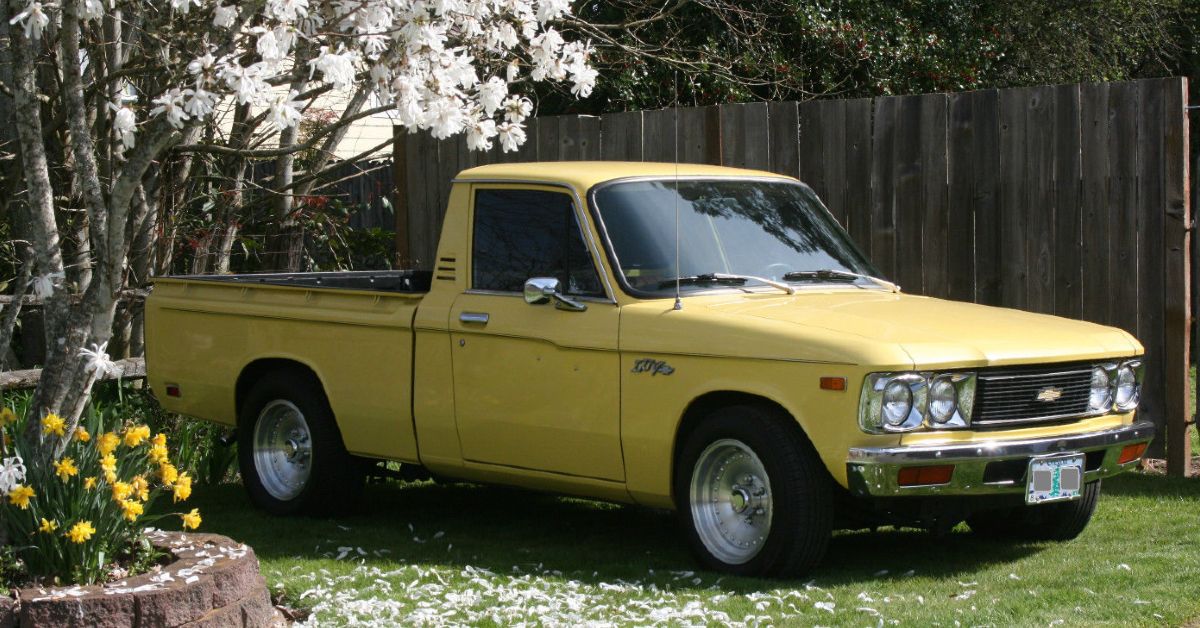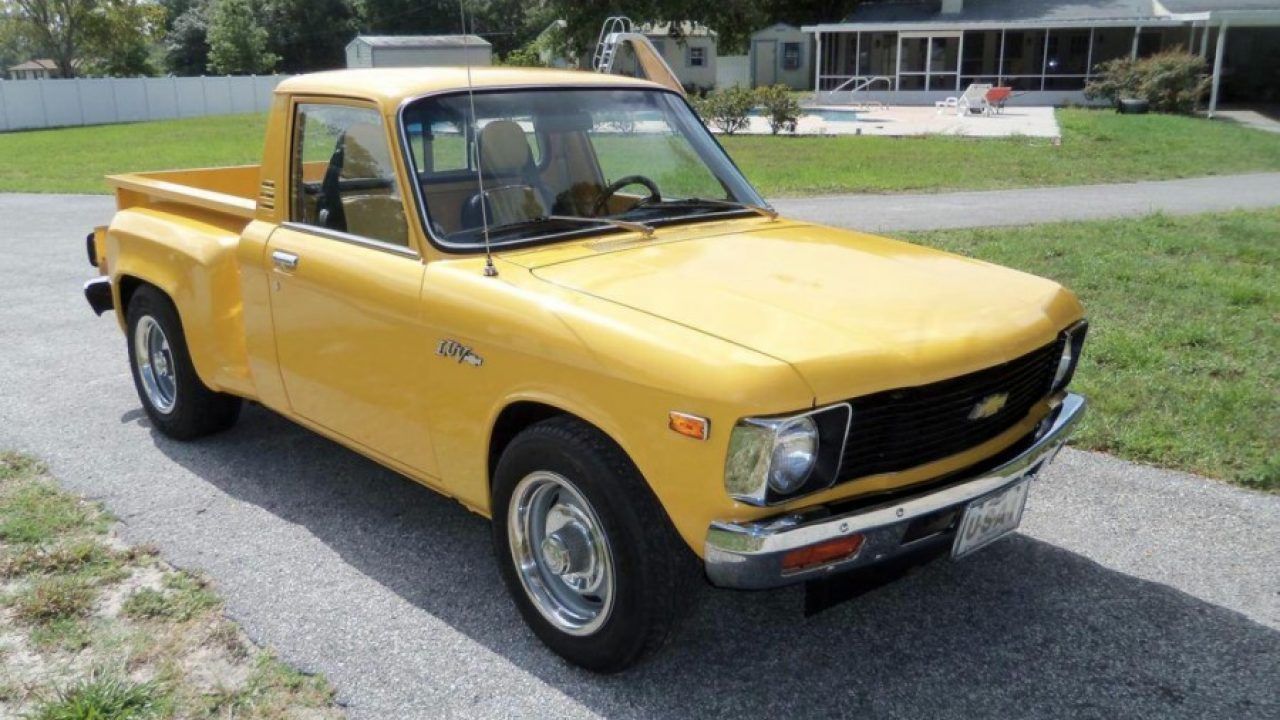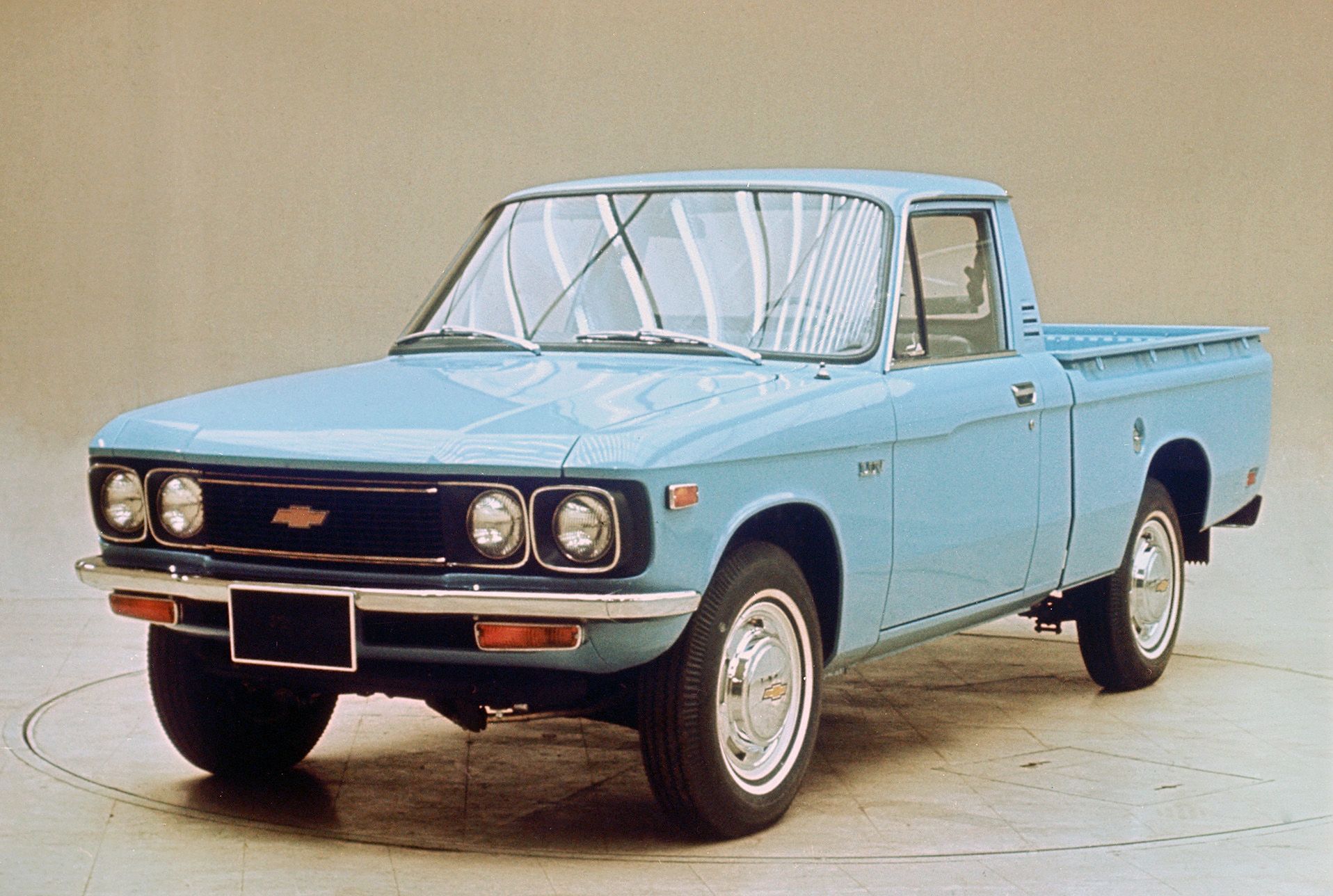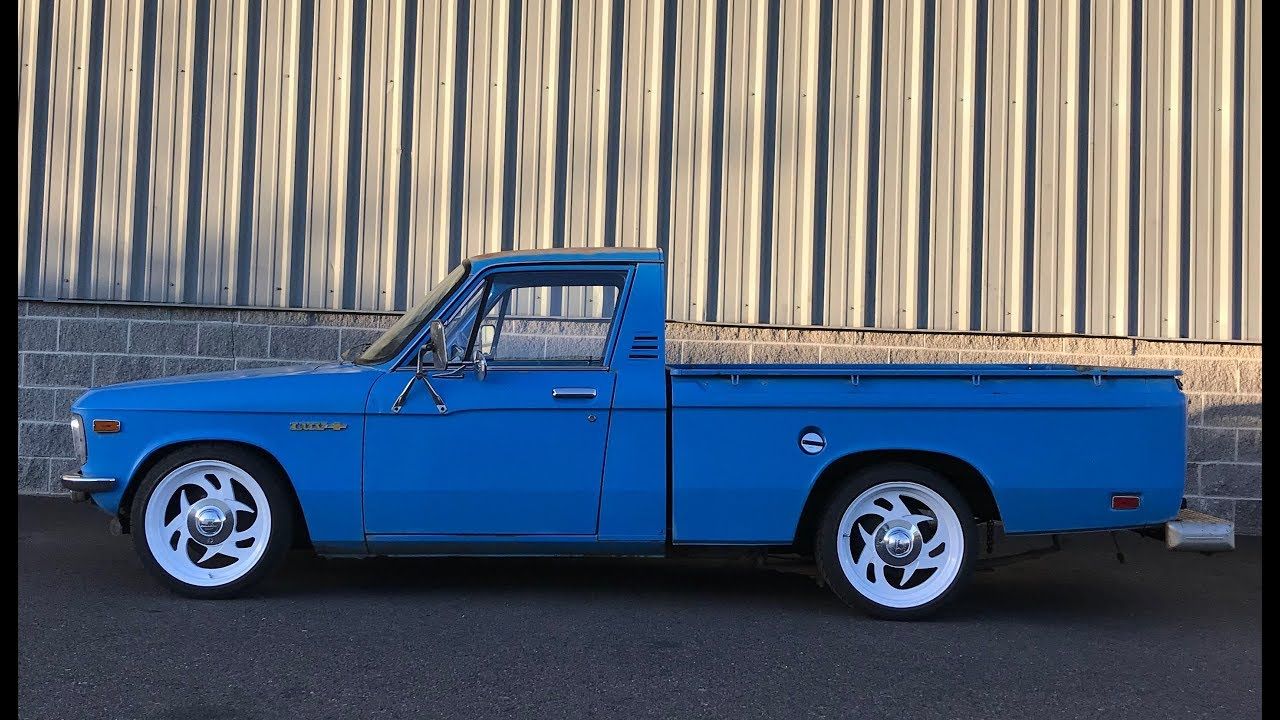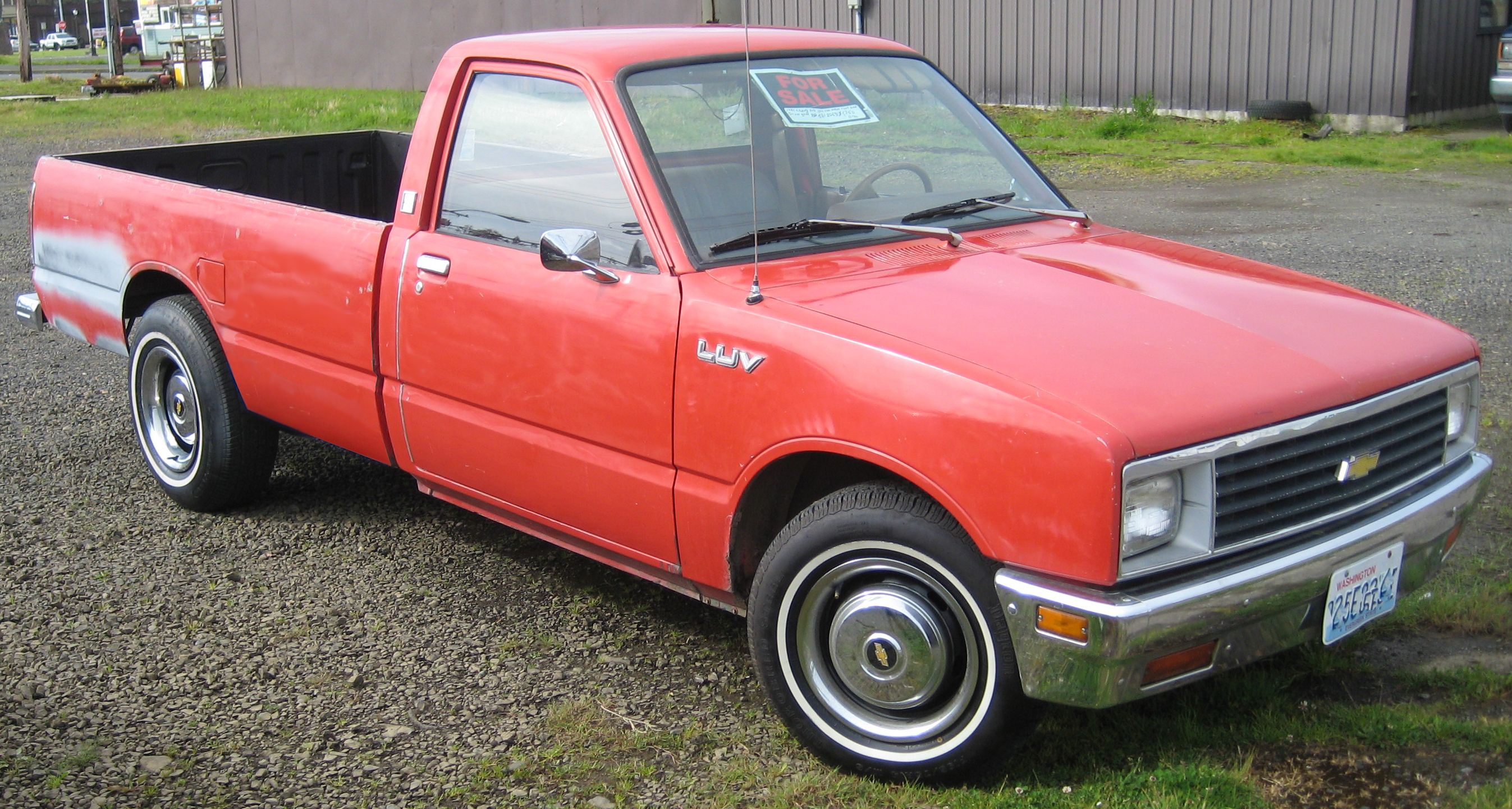The Chevrolet LUV was a now-defunct light pickup truck that Chevy designed from 1972-1982 that was designed to compete with their competition. LUV is an acronym for "light utility vehicle.”
These vehicles were originally designed and manufactured by Isuzu before they arrived in the United States. The LUV was a rebadged variant of the Isuzu Faster and D-Max, and was produced over four generations. Despite the initial attraction and appeal from the general public, the LUV never quite caught on.
Ultimately, Chevy folded production on the LUV when these trucks failed to impress the public, as they were considered slow, archaic, generic, overpriced, and altogether unappealing. The competition was producing similar vehicles that were superior in many categories. As a result, Chevy announced the successor to the LUV with the release of the Chevrolet S-10 in 1981, which turned out to be a success.
Read on to discover more about the inevitable cascade failure of the Chevy LUV.
It Was Just Too Slow
When Japanese trucks rose to popularity in the United States during the early 1970s, GM decided to create the Chevy LUV in response. The LUV, which stands for Light Utility Vehicle, was a rebadged Isuzu Faster pickup truck.
For 10 years, the LUV was popular and half a million were sold. The LUV had a solid rear axle on leaf springs in the back and unequal-length A-arms up front, all of which hung from a ladder frame. Steering was based on a recirculating ball system and the LUV featured four-speed manual transmission, a 1.8-liter, 75 horsepower engine, and drum brakes.
However, in its final years, the LUV literally couldn't keep up with the competition, despite Chevy making solid engines that the public wished other cars had. The Chevy LUV just couldn't go as fast as similar vehicles that the competition produced. Motor Trend saw the LUV go from zero to 60 mph in 17.4 seconds with the quarter-mile going by in 20.7 seconds at just 64.3 mph.
Further, the Chevy LUV lacked the extra cab that similar vehicles from Dodge/Mitsubishi, Ford/Mazda, and even its partner Isuzu had, and it could not match the popularity of the Japanese competitors from Nissan and Toyota. Subsequent redesigns and relaunches of the LUV over the next few years attracted the public's attention, but couldn't solve the speed problem.
Even Chevy's attempt at making the LUV more aerodynamic with higher-quality sheet metal didn't help, allowing the Chevrolet S10 to officially succeed the LUV in 1982.
Features Were Deemed Archaic
A lot of the features on the Chevy LUV were deemed outdated, archaic, or out of style. When the LUV was redesigned in 1978, Chevy attempted to address most of these unappealing cosmetic features.
The headlight count dropped from four to two in a new grille while the number of bed lengths increased from one to two. Chevy also put in a new instrument panel in the interior, and a new chassis put more distance between the front and rear axle centerlines. This generation of the Chevy LUV sold 71,145 trucks.
The following year, four-wheel drive was added to the LUV as an attempt to give it more updated features. This time, Chevy achieved both success and popularity to the point where Motor Trend named LUV 4x4 as the magazine's second "Truck of the Year."
The 1979 LUV made little noise when driving, and it had a standard four-speed transmission and two-speed transfer case combined in a single unit, housed in a die-cast aluminum case. Unfortunately, Chevy did not make many updates for the 1980 version, and at that point, the archaic nature of the vehicle was undeniable, and many drivers noted a severe lack of interior features.
Appearance Was Too Generic
The appearance of the LUV was also considered too generic. Many drivers didn't think the first iteration of LUV stood out, while the second LUV in 1981 buried the exterior under sheets of bland, featureless metal.
The Chevy LUV still featured the same 1.8-liter four making 80 hp, because it was still the only engine available. Chevy took steps to make the LUV more notable and distinctive. Rubber replaced plastic in the front suspension bushings to allow better shock absorption. The front disc brakes were larger and electronic ignition was installed, doubling spark plug longevity to 30,000 miles.
However, despite all that, adding a bigger engine was not on their list. Unfortunately, these changes were deemed minimal overall, allowing imported vehicles from other manufacturers to grab the public's attention.
As a result, Chevy declined to promote their LUV further in anticipation of its replacement. Therefore, it became quite forgettable in the market by 1982, just as the public deemed the Malibu somewhat forgettable.
Competition Was Cheaper
On top of everything else regarding the LUV, many drivers considered it too expensive for what it offered, noting the competition had cheaper trucks. A new Datsun pickup truck could be bought for just under $2,000, compared to the roughly $2,700 Chevy C10 from the same model year.
The lower price point made the Datsun far more attractive than the LUV to the younger generation of car buyers. At the time, GM was the biggest corporation in the world, and was at the top of the competition over the American automotive industry, allowing them more power and free reign during the 1960s and 1970s.
Unfortunately, as a response, Honda, Toyota, and Nissan/Datsun decided to make their vehicles more reliable and affordable. Customers decided they'd still rather have a new car from the competition than buy a used Chevy LUV.
In response, Chevy gave the LUV three-speed automatic transmission in 1976, larger bed options in 1978, four-wheel drive in 1979, and a matte, aerodynamic sheet metal skin in 1980. As the LUV was partially made by Isuzu, this attracted the public's attention. However, these upgrades were not enough, contributing to the retirement of the Chevy LUV.
Sources: tfltruck.com, luvtruck.com, autoinfluence.com, motorbiscuit.com,
Next: Here's Why Only True Enthusiasts Like The Chevy Corvair Monza

